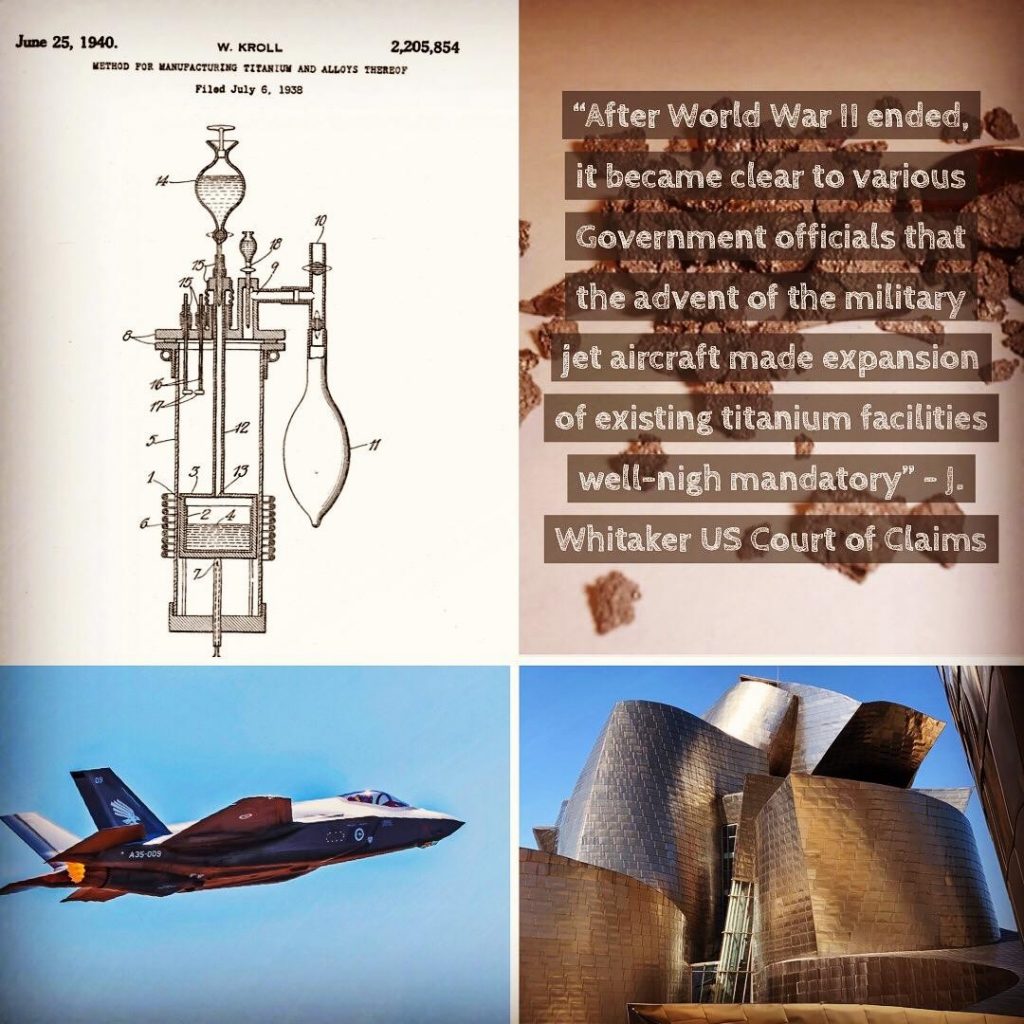In 1937, William Kroll of Luxemburg invented the process we use to make titanium metal. His U.S. Pat. 2,205,854 claimed the “Kroll process”—reacting a titanium halide (TiCl4) with an alkaline earth metal (Mg). The earlier Hunter process made a brittle oxygen-containing titanium metal. Kroll licensed his invention to a German firm Siemens & Halkse (S&H) (predecessor of Siemens AG) in 1934 for a royalty.

By the 1950s, his technology had become critical for producing jet aircraft used extensively by U.S. military. After Germany invaded Luxemburg in May 1940, the U.S. Government seized Kroll’s patent and his contract with S&H under the Trading with the Enemies Act. The government custodian authorized several U.S. companies to produce titanium thinking it had 100% right to do so.
While the U.S. government rights to the S&H contract were clear, Kroll’s rights were a different matter. The custodian had assumed because Kroll was a Luxemburg national, his patent rights vested in the U.S. when Germany invaded Luxemburg. But Kroll fled Luxemburg for the United States in February 1940 before Germany invaded. Because Kroll was not an “enemy alien” at the time war broke out in Luxemburg, a court decided that the government had to return his patent and pay back-royalties.
